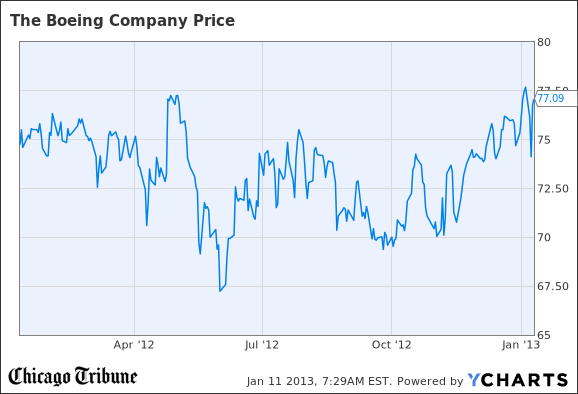Boeing Co.'s 787 Dreamliner jet suffered a cracked cockpit window and an oil leak on separate flights in Japan on Friday -- the latest in a series of incidents testing confidence in the sophisticated new aircraft.
U.S. aviation regulators said Friday morning they will launch a comprehensive review of the Boeing 787 airplane, with a special focus on its electrical systems, following a series of recent safety incidents, the new head of the Federal Aviation Administration said on Friday.
Though, U.S. officials called the plane safe.
"We believe this is a safe aircraft," Michael Huerta said at a press conference with officials including U.S. Transportation Secretary Ray LaHood and Boeing commercial airplanes chief Ray Conner.
LaHood said he would not hestitate to fly on a Boeing 787.
All Nippon Airways Co. said a domestic flight from Tokyo landed safely at Matsuyama airport Friday in western Japan after a crack developed on the cockpit windscreen, and the plane's return to Tokyo was cancelled.
The same airline later said oil was found leaking from an engine of a 787 Dreamliner after the plane landed at Miyazaki airport in southern Japan. An airline spokeswoman said it later returned to Tokyo after some delay. No one was injured in either incident.
The world's first carbon-composite airliner, which has a list price of $207 million, has been beset by problems this week. Some analysts say these are normal teething issues as a new plane enters service under close scrutiny. Others say the incidents could erode public confidence in the aircraft.
The 787 Dreamliner will undergo a comprehensive review of its critical systems by regulators, the U.S. Department of Transportation said Friday.
The review of the jet will include design, manufacture and assembly, after a series of problems in recent weeks, including a battery that caught fire on an empty 787 parked in Boston on Monday.
The agency said it plans to announce more details at a press conference Friday at 9:30 am ET.
U.S. regulators have raised questions about the plane's reliability on long transocean routes, the Wall Street Journal reported.
The 787 Dreamliner made its first commercial flight in late-2011, after a series of production delays put deliveries more than three years behind schedule. By the end of last year, Boeing had sold 848 Dreamliners, and delivered 49.
Earlier this week, a battery fire caused damage to an empty 787 jet operated by Japan Airlines while it was on the ground at Boston airport. The next day, another JAL 787 spilled 40 gallons of fuel onto the taxiway at the same airport after a problem that caused a valve to open, forcing the plane to delay its departure. On Wednesday, ANA cancelled a domestic Dreamliner flight due to a brake-control computer glitch.
Boeing's top Dreamliner engineer, Mike Sinnett, was rolled out midweek to defend the 787, saying the plane's problem rates were no higher than with Boeing's successful 777 jet.
SPIDER WEB CRACK
ANA said crew noticed a spider web-like crack in a window in front of the pilot's seat about 70 minutes into Friday's flight, which was close to its destination.
"Cracks appear a few times every year in other planes. We don't see this as a sign of a fundamental problem" with Boeing aircraft, a spokesman for the airline said.
On the later flight, the ANA spokeswoman said she could not specify how much oil leaked from the engine. Later on Friday, ANA - which, with JAL flies 24 of the 49 Dreamliners delivered to end-December - launched its maiden service between Tokyo's Narita Airport and San Jose, California with the Dreamliner.
Jun Akiyama, a plane enthusiast who was taking photos at the airport ahead of the San Jose departure, said: "It's worrying. If there was a major accident lives would be at stake, and these defects are only increasing fears."
But Yasushi Uesaka, a systems engineer from Osaka who was also taking pictures nearby, played down the incidents. "When new things come out, there will naturally be defects. That a lot of these defects didn't occur during flight means they're not too critical, I think."
In India - where state-owned Air India has taken delivery of six Dreamliner jets and has more on order - a senior official at the aviation regulator said there was concern at the recent spate of Dreamliner glitches. The Directorate General of Civil Aviation has not ordered any Dreamliner checks for now, but is waiting for a safety report from the U.S. National Transportation Safety Board, the official said.
Air India spokesman K. Swaminathan said the airline's debut Dreamliner flight to Paris on Thursday went without a hitch.
FUEL SAVINGS
One of Boeing's chief innovations with the 787 is its use of electrical power to run on-board functions such as hydraulics and air conditioning, instead of relying on heavier pneumatic systems used on other planes. The weight savings make the 787 more fuel efficient, a big advantage for airlines battling high jet fuel costs.
To power the electrical system, the 787 uses generators attached to the plane's engines, which produce about 1.5 megawatts of power, enough to power about 300 hot water heaters. The system uses high-voltage distribution panels and powerful batteries, such as the one that caught fire in Boston on Monday.
Makoto Yoda, president of Japanese battery maker GS Yuasa Corp, which makes the Dreamliner batteries, said his company was looking into Monday's fire, and was sending a team of engineers to cooperate with the U.S. investigation.

BA data by YCharts









